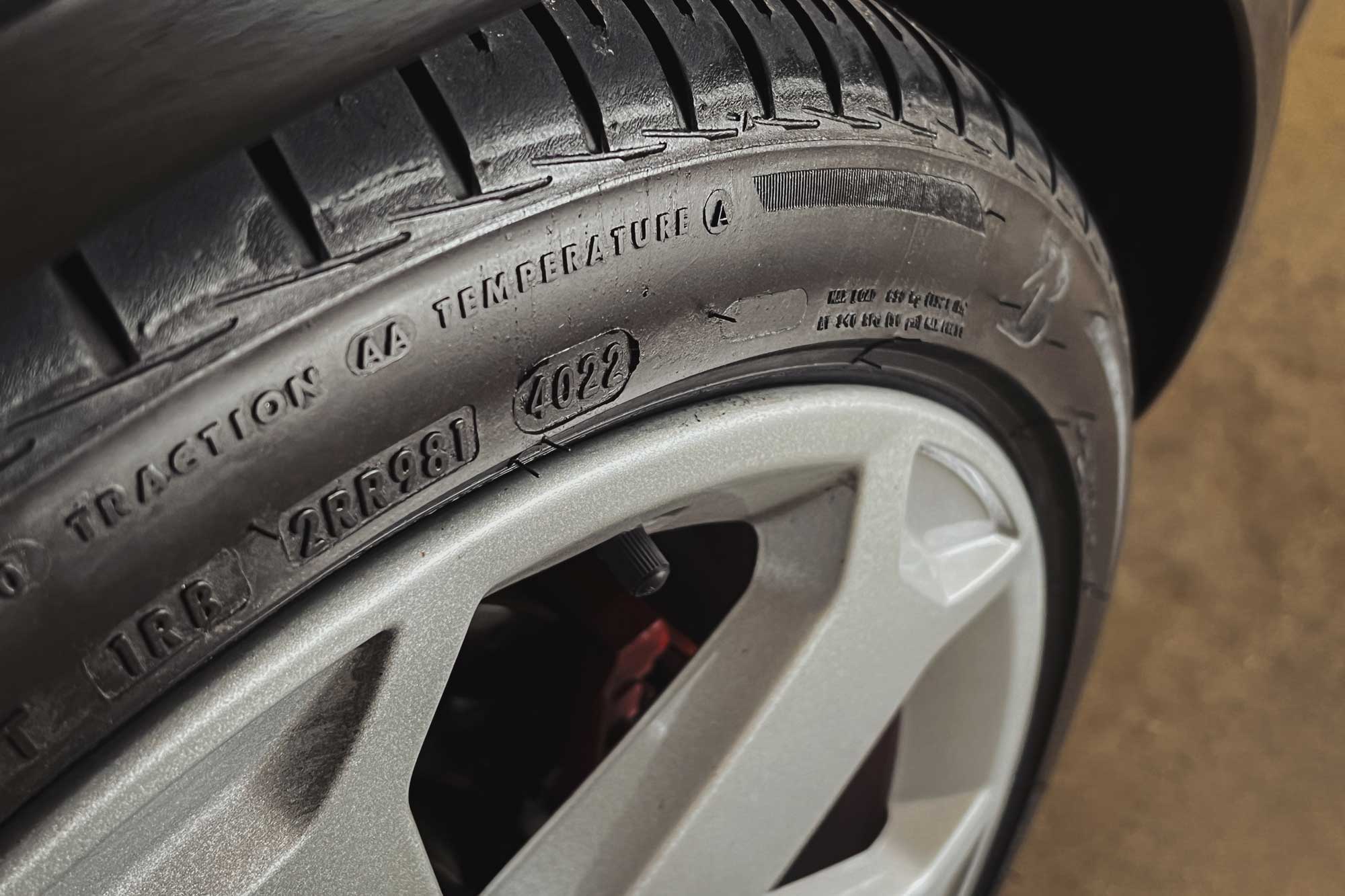Tire Date Codes: What to Know
You can think of them as the birth dates for your rubber.
 Manuel Carrillo III | Capital One
Manuel Carrillo III | Capital One
In a grocery store, you're likely to see a best-by, enjoy-by, or sell-by date that tells you when the product is at its best. Sometimes you'll also find the date of manufacture or — as is the case for certain beers — a "born on" date. Tires carry similar information about when they were made.
What a Tire Date Code Means
Tire date codes are pretty self-explanatory. They are codes that tell you when that particular rubber donut was created. This is how you can determine the age of the tire, which is important safety information. You won't be able to glean its specific birthdate, but rather its birth week.
How to Read a Tire Date Code
Since the year 2000, all vehicle tires sold in the United States use a four-digit code to describe the week and year they rolled off the assembly line. These four digits are the last in a string of characters, called the tire identification number, that begins with DOT for Department of Transportation and is stamped into the tire's sidewall. The first two digits correspond to the week (01 to 52) and the second two to the year (starting with 00, which translates to 2000).
If you find only a portion of the code, but your tire appears to be missing the four-digit number, don't panic: some tire manufacturers only stamp it on one side, so you may have to check the back, especially on non-directional tires.
Prior to 2000, tires used three-digit date codes, with the first two standing for the week of the year, while the last number identified the year within the decade (but not the decade itself).
The assumption here was that tires should be replaced well within 10 years of manufacture. For example, if 317 was at the end of the tire identification number and the year was 1999, the idea is that the tires were made in the 31st week of 1997 (and not 1987, 1977, or earlier). This is the context behind how the fourth digit appearing today adds clarity.
Why Tire Date Codes Matter
A good rule is to replace tires after three to five years, regardless of how many miles they've driven. This is because the compounds in tires break down over time.
It's also ideal to check the date codes when buying used tires or a used vehicle. If you know the tires are nearing the end of their life, factoring that into the cost of the vehicle can perhaps be a negotiation tactic to score a discount.
Date codes also come into play with tire warranty claims. The manufacturer usually covers the tire for a certain number of years from when the tires were made or first installed — assuming you have the receipts to prove when you bought them.
Written by humans.
Edited by humans.
 David Gluckman
David GluckmanDavid Gluckman has over a decade of experience as a writer and editor for print and digital automotive publications. He can parallel park a school bus, has a spreadsheet listing every vehicle he’s ever tested, and once drove a Lincoln Town Car 63 mph in reverse. When David’s not searching for the perfect used car, you can find him sampling the latest gimmicky foodstuffs that America has to offer.
Related articles
View more related articles